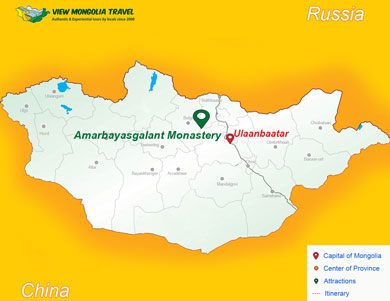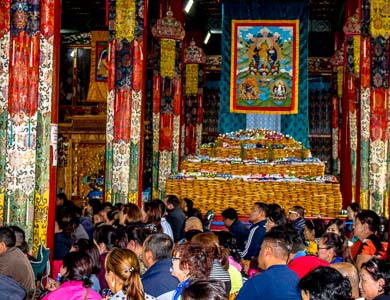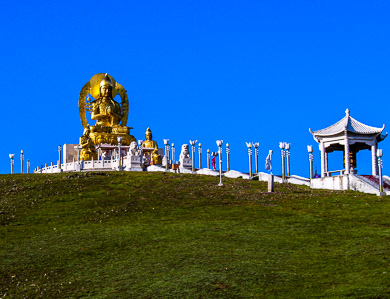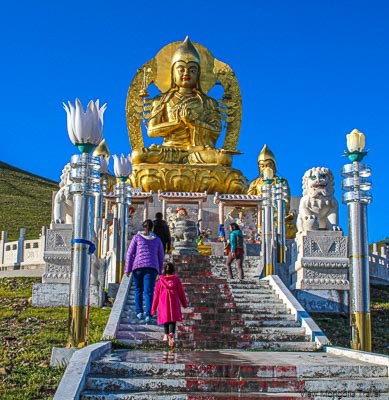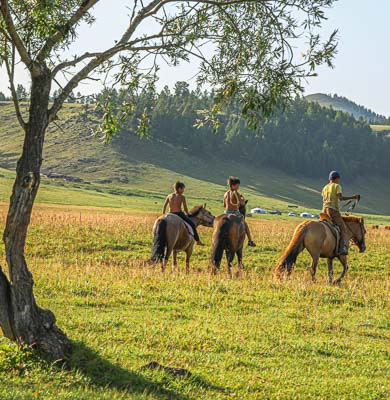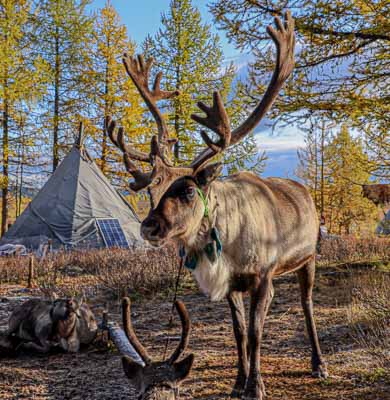Amarbayasgalant Monastery
LOCATION: 360 km northwest of Ulaanbaatar, 35 km north of the Darkhan-Erdenet main road in Baruun Buren Soum (administrative unit), Selenge province.
Architecturally beautiful Amarbayasgalant monastery is one of the three main monasteries in Mongolia, was built between 1727 and 1737 by the Manchu emperor Yongzheng, the son of Kangxi of Manchu (Qing dynasty)commemorating Zanabazar, the first Bogd Gegeen (religious title), leader of Mongolian Buddhism, sculptor, and painter.
Zanabazar's (1635-1723) remains were transferred to the monastery in 1779. Pilgrims from all over the Tibetan-Mongolian Buddhist world came to the monastery to worship and pay homage to the mummified body of Zanabazar. Above the entranceway of the monastery is a large tablet with golden inscription in Mongolian, Manchu, and Chinese, says “The monastery Amarbayasgalant built at the Imperial Command “
Amarbayasgalant monastery sets on the southern slope of Burenkhan Mountain in the picturesque valley of Iven River.
Formerly, Amarbayasgaant had 40 temples, about 500 log cabins and gers that resided by 2000-3000 monks during its peak years. Currently, there are 28 temples in four main courtyards, surrounded by 207m by 175m wall; those remained from the 1930’s communist purge. Restoration of the monastery began in 1988 with funds provided by UNESCO and private sources after neglecting 50 years.
The two-story 32m by 32m main temple Tsogchin Dugana is an architectural wonder and the roof tile work and enamel ceilings are work of great craftsmanship. 4 middle pillars of Tsogchin Dugana acts as the rain duct connecting with tunnels under its floor.
There are 40-50 monks in residence including young monks in training rely on few elderly abbots.
The ceremony is in process in the main two-story temple. 6 temples are open to the public and foreigners are required to pay an admission fee. The rest of the temples used to house mummified bodies of first Bogd Gegeen Zanabazar, third and fourth Bogd Gegeens.
Zanabazar’s mummify removed by the local worshippers during the communist purge and hidden somewhere in the surrounding mountains.
The monastery keeps many important original scripts of cultural heritage including the 108 volumes of Ganjuur and the 226 volumes of Danjuur, were written of ancient philosophy, medicine, geography, art, science, music, and astronomy in 1628. UNESCO registered this wonderful monastery as the World Heritage Site in 1996.
One of the largest religious rituals Gongoriin Bumba sacrifice takes place in the Amarbayasgalant Monastery in mid-August, involved by a great number of local worshippers.
The monastery has connected to Ulaanbaatar 325 km paved roads and 35 km dirt roads, requires 6-7 hours drive, a perfect destination for an overnight trip. Alternatively, you may visit the monastery along the way to or back from Khovsgol Lake.
